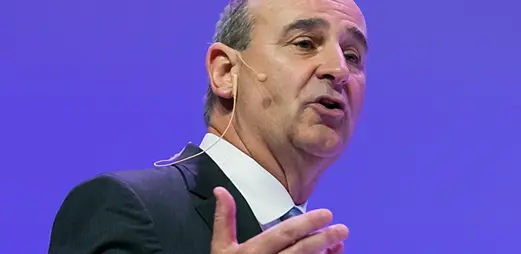THE WORLD’S #1 EXECUTIVE COACHING AND BUSINESS COACHING BLOG SINCE 2017.
The 7 Non-Negotiable Keys to Becoming a Transformational Leader and Transforming Your Organization
June 30, 2016 | Category: Blog, Intelligent Leadership
Around the globe, corporate boards, CEOs, and C-level executives are pushing for more innovation, higher efficiency, a more vibrant culture, and fiscal strength. “Good” isn’t good enough: today the goal is nothing short of the best. At the same time, the world business environment is turbulent, with markets emerging and evolving rapidly, and the stakes for businesses higher than ever. Whatever an organization’s particular mandate, whether it’s being more innovative, customer-centric, or even having to merge corporate cultures due to a merger or acquisition, the fact is a lot of these transformation initiatives fail. In fact, my own research tells me that the majority of business transformations fail, and it’s nothing to do with having the wrong vision or a flawed strategy.
Leaders can’t expect transformation if they’re unwilling to embrace disruption.
The main reason transformations fail is that the leaders are unwilling to accept disruption – including disruption of their own roles. If the top-level executives aren’t visibly committed to and passionate about their own transformation, they simply can’t expect everyone else to make cultural transformation into reality. Successful transformation depends on the CEO and other three-letter executives tackling the following elements, which I call the 7 Non-Negotiable Keys to Becoming a Transformational Leader.
Thinking Big and Thinking Different, Starting with the CEO
If thinking at the top doesn’t change, there’s no point asking people at lower levels to change their thinking. Thriving in the face of change is hard, and it can’t happen unless top leaders learn to change their own thinking patterns and do so on a big enough scale. How can real change take place if everyone is married to the same outmoded thought patterns? Real change begins with a change in attitude, starting at the top.
Understanding the Value of Vulnerability
Knowing when and how to accept vulnerability and take calculated risks is something every top executive should know. Look back at your own history and you’ll probably find that your own breakthroughs in effectiveness occurred only after you recognized a risk or vulnerability, owned it, and addressed it. Sure, polishing your strengths is important, but addressing weaknesses is just as critical.
Knowing How to Own and Develop Strengths
Nobody wants an overbearing braggart leading their company, but organizations need leaders with recognizable strengths. Just as you should own and address skills that need improvement, you should recognize and use your strengths to your (and your company’s) advantage. This doesn’t require conceit or arrogance, just honesty – another key quality in a leader.
Courage to Take Action
It’s not always easy to go from planning to execution, but transformation can’t happen otherwise.
You can talk all day about the great things your company is going to do, but that’s no substitute for actually doing them. It can be hard to execute plans after having talked them up extensively, for fear of letting people down. What separates effective change leaders from ineffective ones is putting the boots on the ground and getting things done. Are there risks in going from idea to execution? Yes, but the best leaders understand and manage risk capably.
Feeling Privileged Rather Than Obligated for the Opportunity
Talk to transformational business leaders (as I have done) and you’ll find that they all possess a “privileged mindset.” They are grateful they are part of something bigger than themselves and honored to take part in true business transformation. Having this frame of mind can be the perfect fuel for achieving escape velocity from one’s comfort zone and learning to embrace the disruption necessary for positive transformation.
Remaining Conscientious and Vigilant
Much of corporate transformation is down to plain hard work and sticking with it. It can be challenging to balance the need to take action with the need to be aware of the impact of those actions. The transformational leader, however, lives neither in the safe past nor the limitless future, but in the here and now. And doing that effectively requires taking action while remaining conscientious and vigilant about work quality throughout.
Willingness to Correct Course
No leader, no matter how skilled, can perfectly predict the future. Good leaders may get it right more often than not, but nobody can know what factors will come into play tomorrow or the next day. That’s why the effective transformational leader is able to recognize when a plan of action is straying off-course, develop a plan to realign actions, and see that the team and project are successfully steered back to the correct path. Having worked with top business leaders across the globe, I understand the importance and nature of business transformation in the 21st century, and the keys to making change work. I encourage you to contact me to learn more about what it takes to sustain the leadership and talent culture necessary to success in today’s world.





